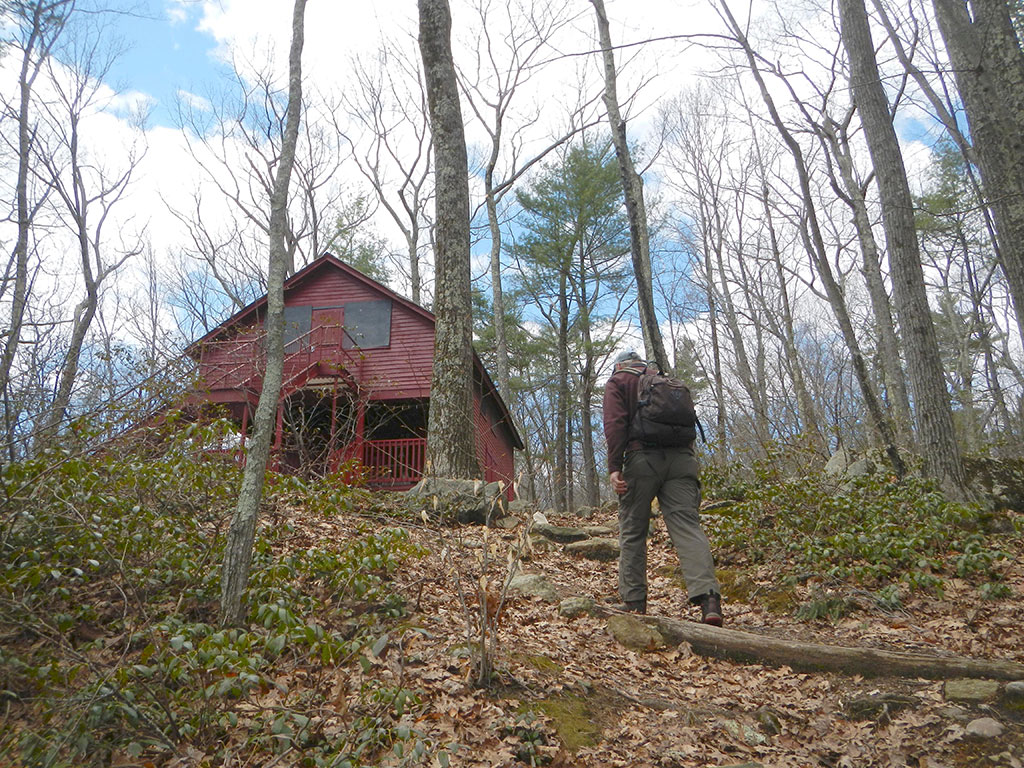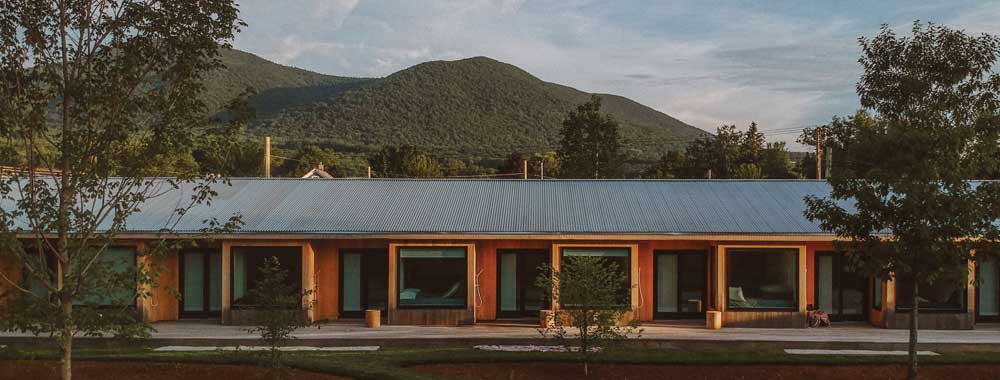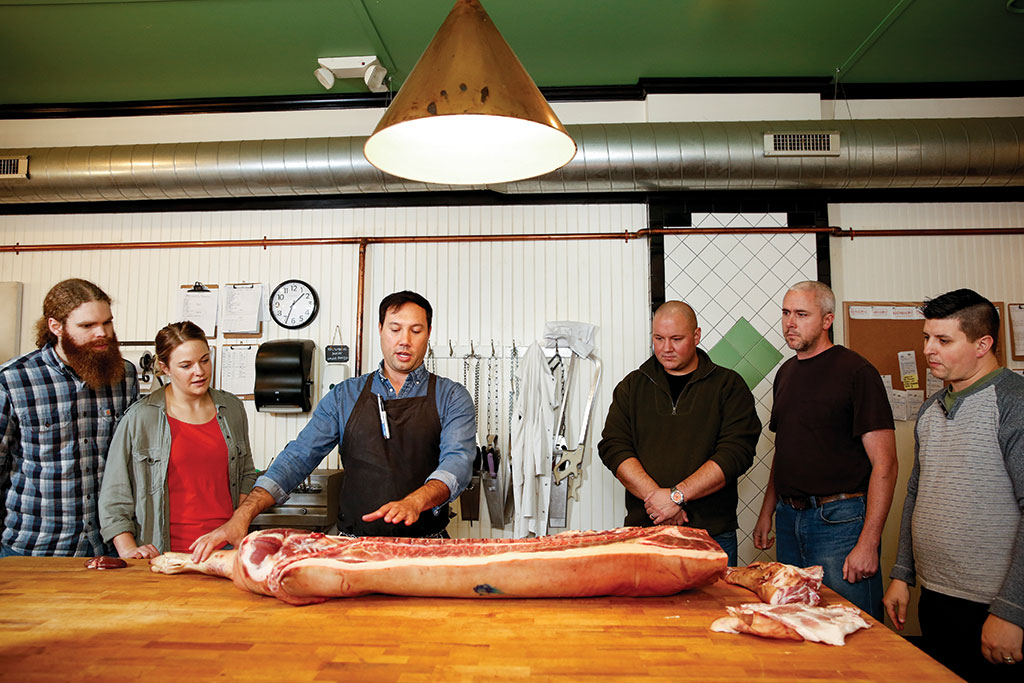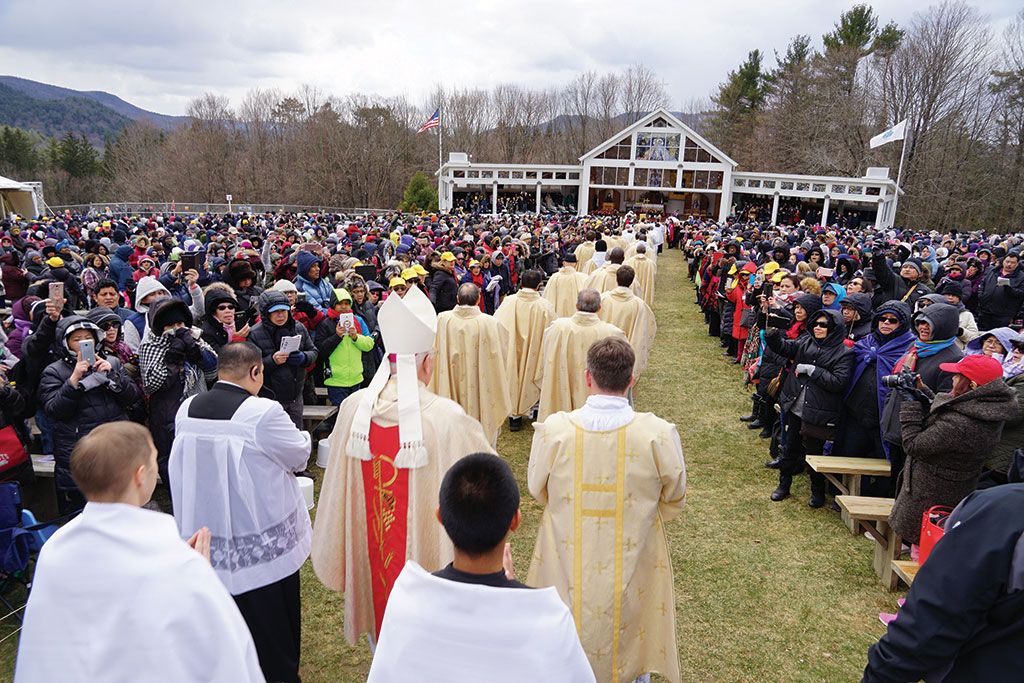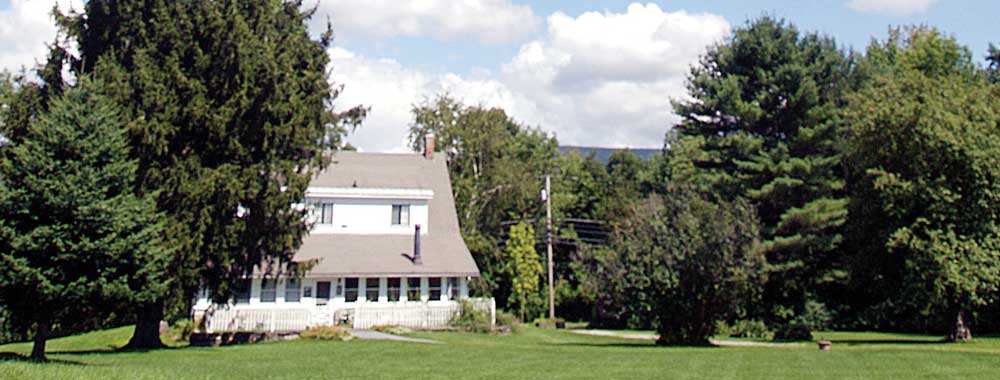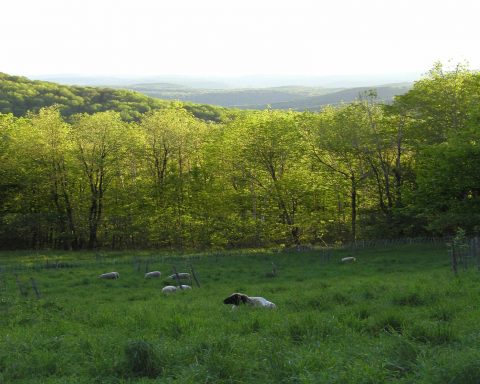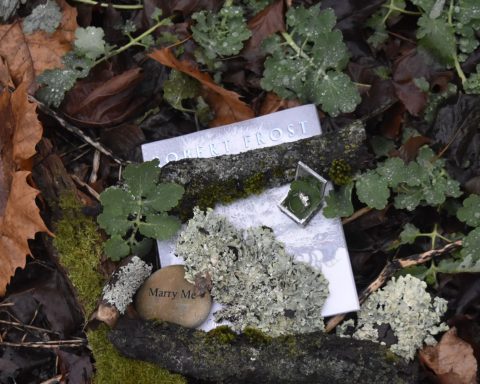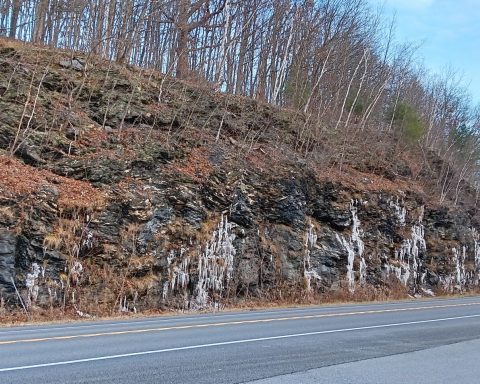Volunteers help the Appalachian Trail maintain its iconic status

By Benjamin Cassidy
“Everybody’s out, right?”
The last boards had just been applied to Upper Goose Pond Cabin’s windows when Cosmo Catalano, the Massachusetts Appalachian Trail Management Committee’s volunteer coordinator, took an informal roll call. On a frigid late-October day, nine other volunteers had assembled to help close the building for the season, venturing into the woods off Route 20 in Lee, Mass. They inventoried cleaning supplies, swept floors, carried canoes, secured the structure’s exterior and, once they were done, exited the cabin before it was locked.
“Just wanted to make sure,” Catalano said after accounting for everyone.

The Williamstown resident is meticulous and methodical, qualities that his fellow committee leaders tend to share. Working with a roster of about 200 volunteers, they guide efforts to maintain the 90-mile Berkshires portion of the Appalachian Trail so that thousands of hikers don’t encounter unnecessary obstacles and health hazards along the 2,192-mile path’s Massachusetts stretch. In 2018, Massachusetts volunteers logged 6,712 hours. While some of them perform section overseeing and, in shifts, 24-hour-per-day cabin caretaking, less-time-intensive tasks such as clearing boundaries and repairing boardwalks are open to all when the 2019 season kicks off in late April or early May.
“Anybody who calls us up or emails us or shows up, we’ll put ’em to work,” Catalano said by phone Jan. 29, four days before the 17th Appalachian Trail Volunteer Gathering in Great Barrington.
The Massachusetts Appalachian Trail Management Committee is part of the Appalachian Mountain Club’s Berkshire chapter, one of 31 clubs affiliated with the Appalachian Trail Conservancy.
“These groups represent the living promise of ordinary citizens toward a cause greater than self — to foster a place that offers reprieve to those who seek time in nature in our continually industrialized nation,” the Appalachian Trail Conservancy says of volunteers.
For Catalano, serving that cause has become more complex recently because the amount of thru-hikers has rapidly increased. In 2011, an estimated 1,700 hikers began the northbound from Georgia to Maine. In 2018, that number was 3,862, a figure that doesn’t include increasing numbers of hikers who take southbound or “flip flop” (noncontiguous) courses, section hikers and day hikers.

Meanwhile, trail completion rates have dropped. In 2011, 467 northbound hikers finished within 12 months, about 27 percent of those leaving from Springer Mountain. In 2018, 669 hikers accomplished this feat (as of late January 2019), a 17 percent rate. It isn’t the wear and tear on the trail that has committee members examining increased visitorship; it’s the potentially shifting expectations surrounding the hike. While safety is paramount, where is the line between maintaining and altering an iconic trail?
“When people go hiking on the trail, are they looking for a backcountry, primitive-type experience, or are they now expecting to see more people, to have more developed facilities for overnight use?” Catalano said. “Are they expecting more signage, help with navigating, and things like that? We’re wrestling with that as a committee. We’ve made it better to the point where it’s just not quite a rugged trail anymore.”
In preparation for the 2018 season, groups added more tenting to multiple Berkshire campsites, which drew large crowds over the summer.
“We timed that pretty well,” Catalano said.
Maintainers also made the usual repairs to structures that allow hikers to safely pass over damp areas.
“We put large stones in there for people to walk on instead of slogging through the mud, and if it’s a longer stretch, sometimes we’ll split trees in half lengthwise, called bog bridges, and lay those down on boards,” Catalano said.
Sometimes, replacements can feel like additions. In late spring, volunteers installed a new dock at Upper Goose Pond, expediting camp operations and creating an appealing hiker hangout.
“That was an early accomplishment,” Catalano said.

Shuttering Upper Goose Pond Cabin was the final one. On this fall morning, the group of volunteers trekked up a well-groomed access trail. As always, a sign-in sheet had been distributed among the bundled, backpack-toting bunch. (A signature is required for participation.) Newcomers Sara Bedford and Maggie Whitehead walked with committee chair Jim Pelletier. Even in sub-40-degree weather, the Pittsfield resident was relishing the hike.
“We’ve been having fun for a good, long time,” he said of his time with AMC Berkshire.
Pelletier was soon pulling labeled red planks from a shed by the cabin, handing them to volunteers to place below their corresponding windows. Along with Catalano, who has been involved with AMC since 1999, Pelletier, Upper Goose Pond maintenance coordinator Pete Rentz and shelter coordinator Don Fairbanks are trail management veterans.
“We need people to commit to the trail like they do,” Great Barrington’s Joanne Sheron said.
Sheron was sorting through silverware in the cabin’s kitchen. She is a long-timer herself; her grandfather and father, George Osgood, were involved with the cabin, — it hosted 2,222 overnight visitors from mid-May to mid-October 2018 — from its earliest days.
“I’ve seen how thru-hiking has changed,” she said, explaining that she notices that hikers are often leaning on their phones for help instead of making weeks of preparations in advance.
Bedford and Whitehead were kneeling on the floor behind Sheron, checking for food and other supplies. Outside, Rentz lined sanitizing jugs on a long table. He has been a caretaker at the cabin for more than a decade.
“I’ve been the go-to guy for the nuts and bolts of Goose Pond Cabin,” he said.
Rentz’s aim is to make hikers’ experiences safe and memorable during their respites. He has been successful.
“Pete is such a great guy and can make some bomb blueberry pancakes!” one hiker wrote on June 1 in the cabin’s register book, a first draft of history that Fairbanks manages.
When Monica Aguilar hiked the Appalachian Trail in 2018, her time at the building was a break from the elements.
“This was a very nice reprieve from the rain,” she recalled before lunch.
Aguilar began participating in trail maintenance work after the conclusion of her thru-hike Sept. 16. After lunch, the Hadley resident helped affix some of the final boards to the cabin.
“I just wanted to give back to the trail because it’s pretty amazing that you can walk 2,200 miles consecutively,” Aguilar said.
The committee also has tapped her to help with public communications work in the coming year.
“She’s active and interested and can provide the older folks, like myself, a little glimpse of the reality that’s out there these days,” Catalano said.

The Upper Goose Pond Cabin register book holds notes from hikers. 
Unlike Aguilar, Catalano has never hiked the whole trail. He traverses sections outside Massachusetts for about a week every year, he said. He’s always struck by their maintenance.
“A footpath that’s continuous for 2,000 miles is an amazing concept, but what’s more amazing, and what amazes me every time I go out there is that volunteers are the reason that it’s there,” he said. “Volunteers had the original concept and got it started, and they continue to make it happen on the ground.”
Benjamin Cassidy is the arts and entertainment reporter for The Berkshire Eagle. A graduate of Columbia Journalism School and the University of Michigan, Benjamin now lives in Dalton, Mass.
